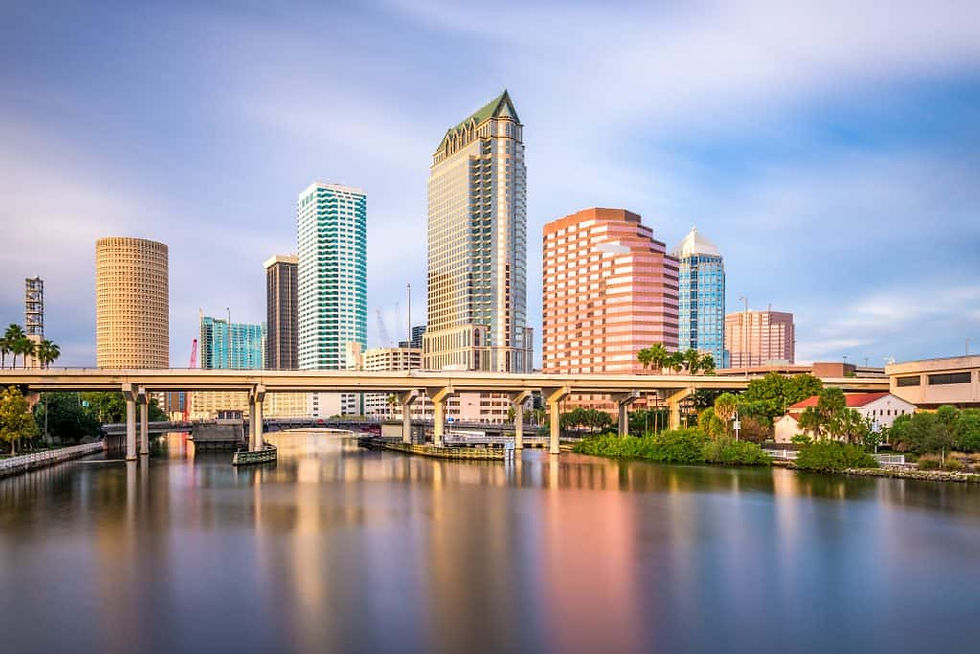The History Of Kissimmee
- Christine Elias

- Mar 22, 2021
- 3 min read
Updated: Dec 17, 2021

Kissimmee, a family-friendly town in South Orlando, got its start in the 1800s as Allendale, a small trading post on the northern bank of Lake Tohopekaliga. Following the Civil War, this area was included in four million acres of marshland and plains that were purchased by Hamilton Disston, the owner of Disston Saw Company in Philadelphia. At a total price of one million dollars, it cost 25 cents an acre! Most importantly, that one million dollars rescued the state from financial disaster.
Kissimmee’s Past
The first post office in Kissimmee was established in 1873 near Shingle Creek. In January 1881, Disston drained the area and deepened the Kissimmee River, allowing items such as cypress lumber and sugar cane to be shipped into the Gulf of Mexico and beyond. Soon after, in 1882, the first newspaper in Kissimmee was published, and the first school opened — a one-room schoolhouse in the First United Methodist Church on Main Street.
In 1883, 33 of the 36 registered voters voted to incorporate Allendale as Kissimmee City and elected the town’s first mayor, T.A. Bass. In 1884, Makinson Hardware opened downtown; it remains Florida’s oldest operating hardware store today. Unfortunately, the Panic of 1893, which was the worst depression ever seen in the U.S. at that time, greatly affected the area. Then, in both 1894 and 1895, disastrous freezes wiped out the citrus groves and drove many families even further south. Disston Saw Company stopped payments and moved back to Philadelphia.
Thanks to a Florida land boom in the 1920s, the population grew again and reached more than 2,700 people. In the 1930s, the cattle industry took off, although citrus and other crops remained the predominant industry. In the 1940s, the Kissimmee Airport was built by the U.S. Army Corps of Engineers in preparation for our nation’s involvement in World War II, leading to a 38 percent population increase (up to 3,700 residents).
City leaders continued to grow the town by attracting retirees to the area during the 1950s. Walt Disney World and other tourist attractions popped up in the 1970s, stimulating yet another period of growth. Between Disney World’s opening in 1971 and 1980, the city’s population doubled from 7,500 to 15,000.
Present-Day and Future Growth of Kissimmee
Tourism and land development as well as citrus packing and cattle ranching remain the primary industries in Kissimmee today. Located in Osceola County, present-day Kissimmee has a population of just over 71,000. Many families live here, no doubt attracted by the above-average public schools, numerous restaurants, diverse neighborhoods, and local parks. Residents rave about “the historical remanence of the town,” seen in the bricks and pavement of downtown, as well as the “small community that will take care of you as if you’re family.” Of course, the convenient drive to Orlando is another big draw.
In 2020, the Orlando Realtor Association identified Kissimmee as the hottest growth area for single-family homes in Central Florida over the next decade. Supporting this statistic, the job growth over the next ten years is predicted to be 45.5 percent — significantly higher than the U.S. average of 33.5 percent.
The real estate market in Kissimmee and other areas of Central Florida is booming. To start 2021, there were fewer homes on the market, signifying that more people are moving here and furthering the gap between supply and demand. Homebuyers must be pre-approved and make decisions quickly, as homes are spending an average of only 40 days on the market (versus 60 days in January 2020). If you’re interested in buying a new home in Central Florida, be sure to check our website for current listings!
Be sure to check our blog next month for the second installment of our The History Of series, with a focus on St. Cloud!
Let The Urban Dog Group help you with your real estate needs in Kissimmee and other areas of Central Florida! Contact Christine Elias at caerealestate@gmail.com.



Comments